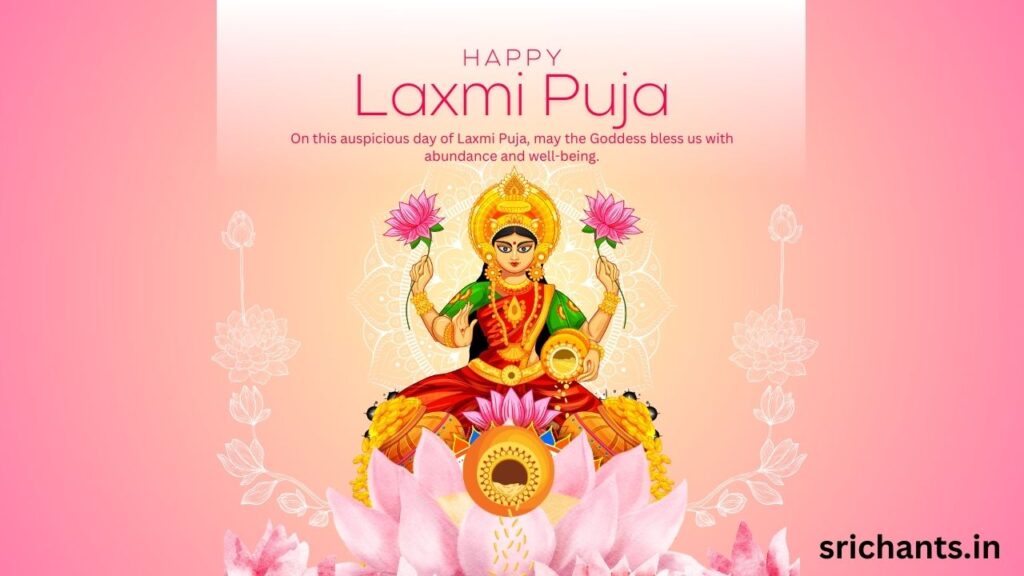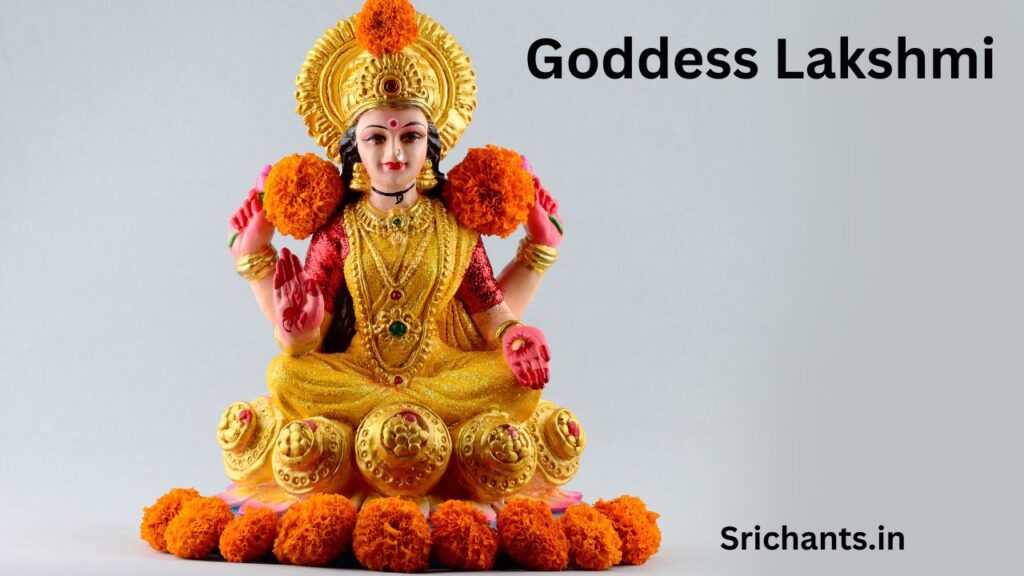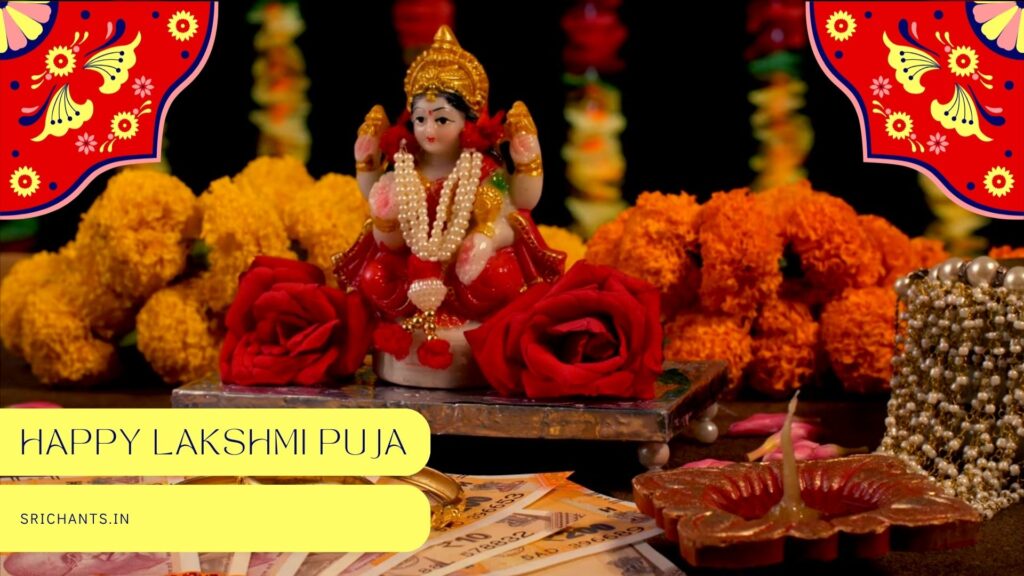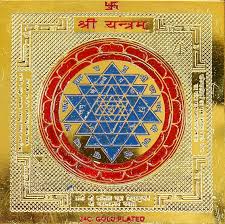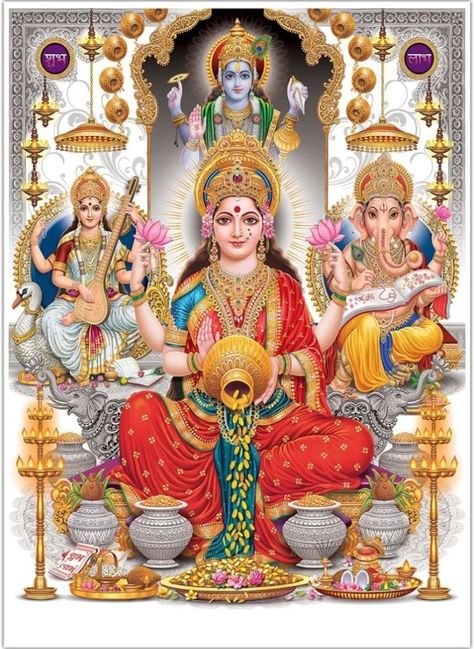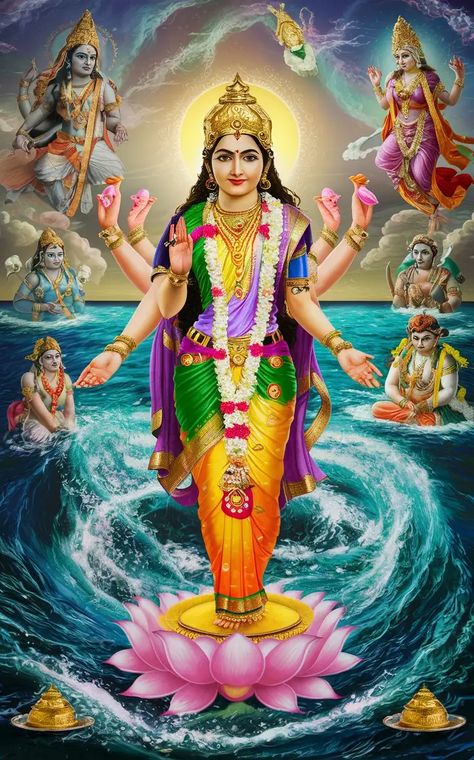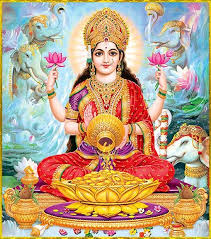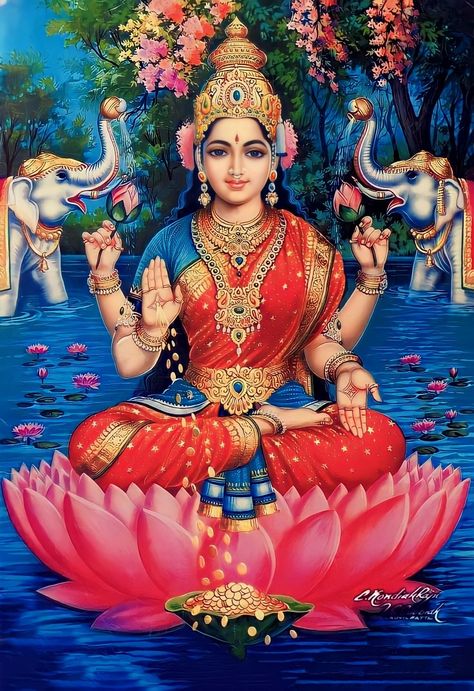Lakshmi Puja : Rituals of Lakshmi Maa’s Puja
Introduction
The most significant festival in the Indian cultural calendar, Diwali is a time of jubilant celebration, family gatherings, and the veneration of the divine. At the heart of this joyous celebration is the sacred Lakshmi Puja, a rite that calls upon the blessings of the Goddess of Wealth, Prosperity, and Good Fortune. Devotees gather to pay tribute to the celestial Lakshmi Maa, seeking her grace for financial prosperity, spiritual enlightenment, and the triumph of light over darkness, as the warm radiance of earthen lamps illuminates homes throughout the nation.
The Importance of Lakshmi Puja
Lakshmi Puja is of paramount significance in Hinduism, as it offers an opportunity to express gratitude for the blessings that have been conferred upon us and to pray for continued prosperity in the upcoming year. The deity Lakshmi, who is the consort of Lord Vishnu, is revered as the embodiment of prosperity, abundance, and good fortune. Devotees strive to secure her benevolent blessings and invoke her divine presence by performing this sacred ritual.
Lakshmi: The Goddess of Wealth and Prosperity
Goddess Lakshmi is not merely a symbol of material prosperity; she is a divine entity that embodies the harmonious equilibrium between spiritual and worldly abundance. It is believed that she bestows her devotees with inner serenity, happiness, and harmony within their families and communities, in addition to financial prosperity.

As a Festivity Honoring Renewal and Purification, Lakshmi Puja
The concept of renewal and cleansing is also profoundly ingrained in the Lakshmi Puja ritual. It is a widely held belief that Lakshmi Maa only visits residences that are clean, pure, and inviting. As a result, the preparation for Lakshmi Puja frequently entails a comprehensive deep-cleaning of the household, which represents the removal of negativity and the preparedness to receive the goddess’s blessings.
The Triumph of Good over Evil and Lakshmi Puja
Diwali, the festival of lights, commemorates the triumph of light over darkness and virtue over evil. The Lakshmi Puja ritual is a crucial component of this celebration, as it symbolizes the victory of righteousness, wisdom, and prosperity over the forces of ignorance and adversity.
The Complicated Rituals of Lakshmi Puja
The Lakshmi Puja ceremony is a meticulously planned and executed event that is steeped in tradition and symbolism. The ritual is imbued with profound spiritual significance at every stage, from the preparation of the sacred space to the offering of devotional petitions.
Sacred Space Preparation
The preparations for Lakshmi Puja typically commence weeks in advance, with a comprehensive cleaning and renovation of the household. The home is adorned with fresh flowers and colorful rangoli designs, and the floors are scrubbed and the walls are repainted. It is believed that this practice of cleansing and decorating the home creates a welcoming environment for the deity, inviting her divine presence.
Turning on the Lights of Prosperity
As the evening of Lakshmi Puja approaches, the ritual’s focal point is the illumination of earthen oil lanterns, or diyas. The soft, flickering luminosity of these lamps is perceived as a symbolic representation of the divine light of Goddess Lakshmi, which enlightens the path to prosperity and abundance.
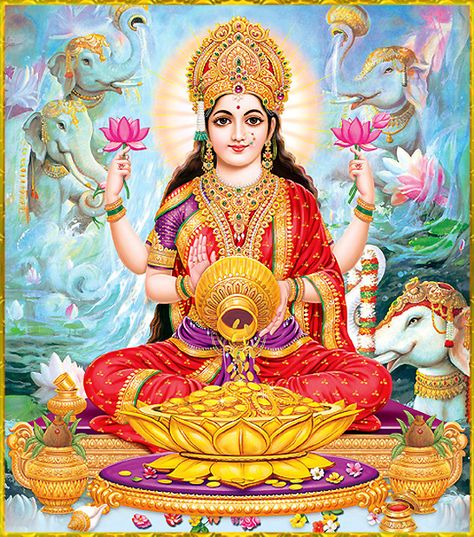
Construction of the Lakshmi Altar
An altar is frequently installed in the devotional chamber or a central location of the residence. The sacred space is adorned with images or idols of Goddess Lakshmi, Lord Ganesha, and other deities. In order to demonstrate their devotion and solicit the divine’s blessings, devotees present flowers, fruits, sweets, and other auspicious items to the altar.
Reciting Mantras and Prayers
A number of sacred mantras and petitions are recited during the Lakshmi Puja ceremony. In order to obtain the goddess’s blessings and favor for their families, businesses, and general well-being, devotees chant hymns, invoke her name, and offer sincere prayers.
Offering Sweets and Delights
Sweets are considered to be the goddess’s preferred offerings, and as such, they hold a special place in the Lakshmi Puja ritual. Devotees prepare a variety of delectable delights, such as laddoos, pedas, and other homemade confections, and present them to the deity. Subsequently, these offerings are distributed as prasad, or blessed food, to family members and visitors.
Festivities and Gatherings to Commemorate
Lakshmi Puja is a time for families and communities to come together in celebration. At ornate feasts, a wide variety of vegetarian dishes are served.. The bonds of unity and harmony are fortified as loved ones visit each other, exchange gifts, and participate in the joyful festivities.
The Regional Variations of Lakshmi Puja
The specific rituals and customs of Lakshmi Puja can differ significantly based on regional and cultural traditions, despite the fact that the essence of the ritual remains consistent across India. The richness and diversity of this auspicious celebration are further enhanced by these regional variations.
Traditions of Lakshmi Puja in North India
In the northern regions of India, Lakshmi Puja is often accompanied by the worship of Lord Ganesha, the remover of obstacles. The ritual may also include the lighting of diyas in a specific pattern, known as the “Lakshmi Lamp,” and the offering of special petitions and mantras.
South Indian Lakshmi Puja Practices
In the southern states of India, Lakshmi Puja is marked by the creation of intricate kolam designs at the entrance of residences. These colorful patterns, made with rice flour or chalk, are believed to welcome the goddess and invite her blessings.
Eastern and Western Indian Lakshmi Puja Traditions
The Lakshmi Puja rituals in the eastern and western regions of India may incorporate additional deities, such as Kuber, the god of prosperity, or the goddess Saraswati, the embodiment of knowledge and wisdom. These regional variations add to the cultural richness and diversity of the Lakshmi Puja celebration.

The Auspicious Timing of Lakshmi Puja
The timing of the Lakshmi Puja ritual is of utmost significance, as it is believed to be guided by the celestial movements and astrological alignments. The most auspicious period for the Lakshmi Puja is determined by the position of the moon, the sun, and the planets, as well as the specific lunar calendar.
Determining the Shubh Muhurat
The Shubh Muhurat, or the auspicious time, for Lakshmi Puja is calculated based on the position of the moon and the sun. This period is considered to be the most favorable for the ritual, as it is believed to be when the goddess’s energy is at its zenith and most receptive to devotional offerings.
The Significance of Pradosh Kaal
The Pradosh Kaal, the period between sunset and the onset of night, is another significant factor in determining the timing of Lakshmi Puja. This period is regarded as particularly sacred and opportune for the solicitation of the goddess’s favors.
The Nishita Muhurat for Lakshmi Puja
The Lakshmi Puja Nishita Muhurat, or the auspicious nocturnal period, is also held in high regard. It is believed that the deity is most receptive to the prayers and offerings of her devotees during this time, which typically occurs between 11:39 PM and 12:32 AM.
The Spiritual and Cultural Significance of Lakshmi Puja
Lakshmi Puja is of profound spiritual and cultural significance to the Hindu community, transcending the confines of ordinary material wealth and prosperity.
Lakshmi Puja and the Pursuit of Spiritual Enlightenment
While Lakshmi Puja is often associated with the attainment of financial success and material abundance, it also represents the pursuit for spiritual enlightenment. Devotees believe that by honoring the deity, they can achieve a harmonious balance between their worldly and spiritual aspirations.
Lakshmi Puja and the Preservation of Cultural Heritage
Diwali and the Lakshmi Puja ritual are not only religious observances but also cherished cultural traditions that have been handed down through generations. The celebration of this festival serves as a unifying force, drawing together people of diverse backgrounds and fostering a sense of shared identity and pride in the rich tapestry of Indian heritage.
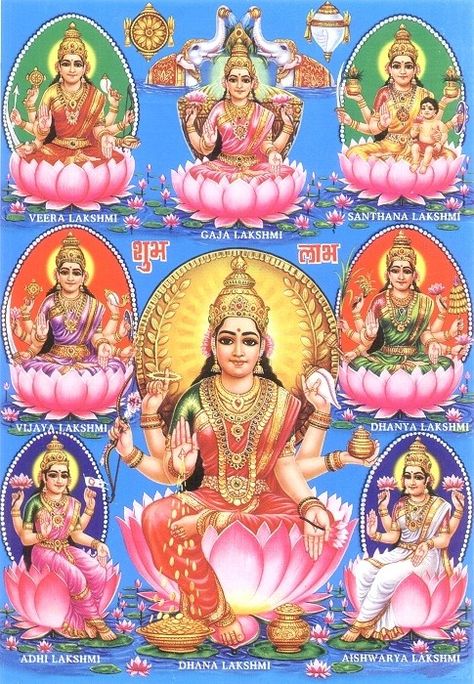
Lakshmi Puja and the Promotion of Social Harmony
People of all social backgrounds and strata participate in the Lakshmi Puja ritual, which serves as a testament to the inclusive nature of Hinduism. This festival fosters unity, harmony, and the spirit of community among the devotees, transcending the boundaries of caste, creed, and economic status.
Lakshmi Maa’s Blessings: Harmony, Happiness, and Prosperity
The celebration of Lakshmi Puja is multifaceted, encompassing the cultivation of social harmony, spiritual enlightenment, and material affluence. Devotees endeavor to obtain not only financial prosperity, but also the blessings of inner serenity, familial joy, and the triumph of good over evil by paying homage to the Goddess of Wealth and Prosperity.
The Blessings of Lakshmi Maa for Financial Prosperity
The primary objective of Lakshmi Puja is to request the goddess’s blessings for the expansion of businesses and enterprises and financial prosperity. Devotees are of the opinion that by expressing their gratitude and devotion to Lakshmi Maa, they can secure her favor and guarantee the ongoing prosperity of their livelihoods.
Lakshmi Maa’s Blessings for Harmony and Happiness
Nevertheless, Lakshmi Maa’s blessings are not limited to material prosperity. Additionally, she is held in high regard as the source of harmony, serenity, and happiness in families and communities. Devotees endeavor to establish an atmosphere of mutual respect, love, and comprehension by pursuing her grace, which in turn fosters more harmonious relationships and a more cohesive lifestyle.
Lakshmi Maa’s Blessings for Spiritual Enlightenment
Ultimately, the Lakshmi Puja ritual is a profound expression of the devotee’s aspiration to achieve a harmonious equilibrium between the spiritual and the material. They endeavor to achieve not only financial prosperity but also a more profound connection with the divine, spiritual development, and interior wisdom by paying tribute to the goddess.
Conclusion: Accepting the Radiant Blessings of Lakshmi Maa
The Lakshmi Puja ritual is a timeless tradition that continues to captivate the hearts and minds of devotees throughout India and the globe. The faithful convene to pay respect to the Goddess of Wealth and Prosperity, in search of her benevolent blessings for a future brimming with spiritual enlightenment, happiness, and affluence, as the warm glow of diyas illuminates homes and the air is permeated with the fragrance of flowers and incense.
By participating in this sacred ritual, devotees not only commemorate the triumph of good over evil but also reaffirm their dedication to the preservation of cultural heritage, the promotion of social harmony, and the pursuit of a harmonious equilibrium between the material and the divine. By accepting the radiant blessings of Lakshmi Maa, they begin a journey of personal and collective transformation, thereby unlocking the pathways to prosperity, pleasure, and the ultimate fulfillment of the human spirit.
#diwali #lakshmimaa #lakshmipuja #deepavali #lakshmi #pujan #lakshmipujan

